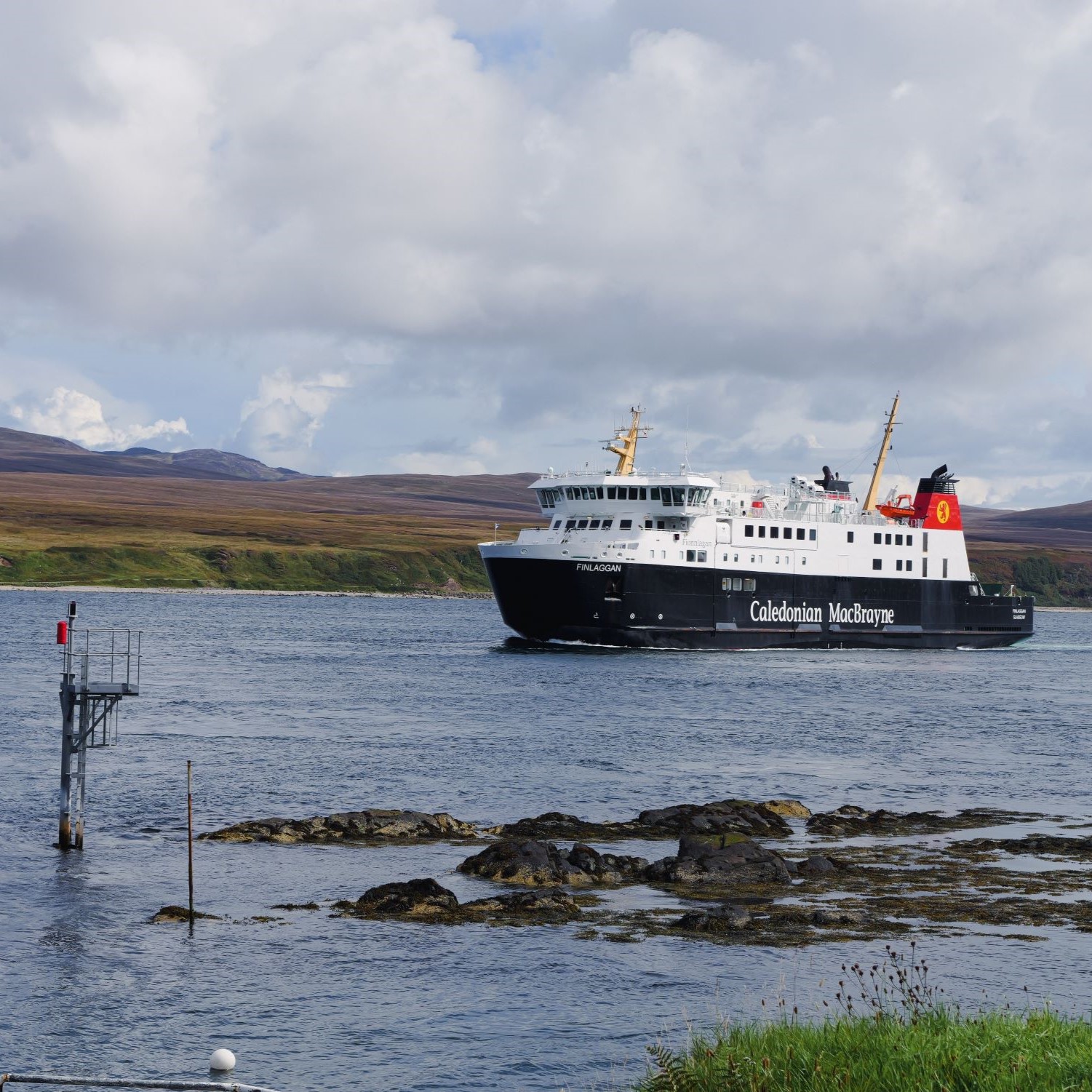Join our campaign to unlock growth
The past 10 years, the Scotch Whisky industry has delivered unprecedented growth, with 32 more distilleries producing Scotch Whisky, 25 000 further jobs created and increasing the value added to the UK economy by over 40%. This growth has been delivered throughout Scotland, from the Borders in the south to the north of Caithness and from the East Neuk of Fife to some of Scotland’s most westerly islands.
Beyond distilleries, new maturation warehouses have been built and blending and bottling facilities expanded. Since 2018, £2.1bn capital expenditure have been made, including in decarbonising operations working towards reaching net zero and in delivering world class visitor experiences. That growth has been fuelled by the confidence in Scotch Whisky’s global appeal and demand from around 180 markets around the word – with export growth of 40% per annum over the last 10 years.
However, the Scotch Whisky industry’s success and growth can never be taken for granted.
Central to enabling its continued growth is a domestic foundation that enables the industry to move people and products efficiently throughout its supply chain; from the movement of cereals into distilleries through to the export of bottles to consumers around the world. Scotch Whisky can only continue to grow if the Scottish infrastructure matches the ambitions of its exporting sectors.
In collaboration with Highlands & Islands Transport partnership, the SWA commissioned a report from WSP UK Ltd, to identify existing issues on the transport network which could have an impact on the ability of the Scotch Whisky Industry to grow in Scotland. The industry's asks of Scottish Government are based on the constraints identified in this report.
Scotch Whisky can only continue to grow if the Scottish infrastructure matches the ambitions of its exporting sectors.
We have three asks of government:
FERRIES

Deliver dedicated freight-services on the Islay route and implement a sustainable and realistic delivery plan for vessel replacement to ensure a resilient network with capacity that supports growth.
FREIGHT

Accelerate delivery of the dualling of the A9 and A96 and improvements to the A95, including but not limited to the Rest and Be Thankful. Accelerated delivery alongside a committed and realistic timetable is key, providing businesses with the certainty they require to inform expansion and investment decisions.
FUTURE

Future proof Scotland's transport infrastructure to enhance road safety, increase resilience and reliability, lower the impact of transport on the environment, reduce journey times and plan for the impacts of a changing climate on it.

"Scotland’s roads, railways, ferry routes, and ports are the arteries of the Scottish economy. Prioritising the delivery of upgrades to our strategic transport infrastructure is key to bringing down the cost of doing business and to unlocking sustained growth for our businesses and our communities.
"It’s time to shift Scotland’s transport offering up a gear and start delivering transport upgrades at pace to fuel Scottish economic growth."
- DR LIZ CAMERON CBE, Chief Executive, Scottish Chamber of Commerce
Infrastructure needs go beyond transport. Digital and mobile networks help to keep businesses and their systems connected, driving productivity and enabling companies to engage with consumers. The planning system, availability of housing for key workers and the availability of wider public services are key in enabling development and in attracting talent to some of Scotland’s most iconic rural areas. Energy networks – the gas and electricity grids – provide energy to keep our production processes running and when upgraded can further enable surplus energy from distilleries being distributed back into the grid for wider public benefit.
Use our interactive map to explore our key asks of government for Scotch Whisky.
Not loading? View the map here.

“Infrastructure serves as the foundation of any nation's economic growth and development, and good infrastructure can help us to achieve a step change in quality of life and environmental performance - it underpins everything that we do in our society. Scotland must continue to prioritise infrastructure investment to keep pace with nations across the globe.
IoD Scotland is passionate in its support of Scotland’s rural economy, and Scotch Whisky is one of its key drivers. But, the rural economy is faced with fragmented infrastructure across the board, therefore proactive and enduring investment is absolutely essential for a thriving and prosperous Scotland.”
- CATHERINE MCWILLIAM, Nations Director - Scotland, IoD Scotland
The benefits of investing in Scotland's infrastructure
Infrastructure investment throughout Scotland is key to deliver sustainable growth. 20th century capacity has lost pace with 21st century growth. Infrastructure investment will deliver reliable, resilient and future-ready capacity, adapted to weather the impacts of climate change and enable the just transition to a low carbon/net zero economy.

Scotch Whisky in the Highlands & Islands in numbers:
Scotch Whisky National Figures
Productivity
Scotland's most productive industries, 2019
Visitors to Scotch Whisky regions in 2022
Hover over the graph for more detail
Source: SWA and SWIR updated 19/07/2024
“The quality of roads and other transport infrastructure has an enormous impact on the Scotch Whisky industry and the small businesses which form the backbone of our rural economy. Without safe and reliable access to markets in the rest of the UK, and around the world, rural businesses often struggle to grow and expand.
“With more than three-quarters of goods in the UK being moved by road, it’s no surprise that nine out of ten small business owners tell us that a high-quality road network is important to their operations.
“The fortunes of Scotland’s distilleries are of course intertwined with those of the small business which provide so many of the employment opportunities in rural communities. When the local distillery does well, so does the maintenance engineer, the computer software consultant, the independent whisky shop and tour guide.”
- COLIN BORLAND, Director of Devolved Nations, Federation of Small Businesses

CASE STUDY: Balblair Distillery
Founded in 1790, Balblair Distillery is located by Edderton, Ross-shire. In 1895, the disitllery was moved half a mile north to its current location, to take advantage of the railway that brough coal for the still and boiler, and barley for the malting. We spoke to David Rogerson, Distillery Manager, on the challenges faced by the distillery to manage green energy infrastructure, attracting talent with limited affordable housing, and bringing key materials to a remote regional location.
Constraint 1: Islay crossing
The Islay ferry crossing is vital to the 11 whisky distilleries on Islay, as well as Jura, who are reliant on it for all the materials and equipment needed to produce Scotch Whisky, exports and tourist and business travel, on top of the needs of those living and working on the islands. In 2022, there were 150K+ visitors to Scotch Whisky distilleries on Islay and Jura, who, like the island communities, depend on a reliable and resilient ferry service. The Scotch Whisky industry supports around 11,000 jobs across the Highlands & Islands, of which Islay is a crucial part.
Constraint 2: A95 between Grantown-on-Spey and Dulnain Bridge
The A95 is an important connecting road through the Speyside region, home to more distilleries than any other region in Scotland and therefore a large contributor to the whisky industries £6.2bn export value. Over 81.3% of the HGVs using the A95 are associated with the whisky industry which account for 77% of Scottish food and drink exports and a large proportion of the A95 has no suitable alternative routes which can be used by HGVs in the event of a closure.
Constraint 3: A83 at the Rest and Be Thankful.
The A83 is a major road for Argyll and Bute, home to over 15 distilleries and is a major connecting road for Islay and Jura. The road’s susceptibility to landslips can cause significant delays and road closures at night which in turn produces lower margins, higher wastage and lower productivity. The frequency of road closures on the A83 at the Rest and Be Thankful is increasing which effects not only tourism and supplies, but also the many employed by the whisky industry in Argyll and Bute.
Constraint 4: A9 between Dalwhinnie and Drumochter
The A9 between Dalwhinnie and Drumochter is a key constraint on this vital transport artery through the heart of Scotland. Many parts of the A9 are still single carriageways which increases susceptibility to disruption and has few diversion options, and where they do exist, add significant time or are not suitable for HGV. The need to dual the A9 has long been recognised but the timetable for this work to be completed has slipped significantly.
Constraint 5: A9 between Invergordon and Tore
There are around 13 distilleries north of Inverness which rely on the A9 between Invergordon and Tore, including those on Orkney. With Scotch Whisky accounting for 18% of Highlands & Islands GDP and 25% of the 41,000 jobs supported by the industry, it is vital constraints on this stretch of road are dealt with.